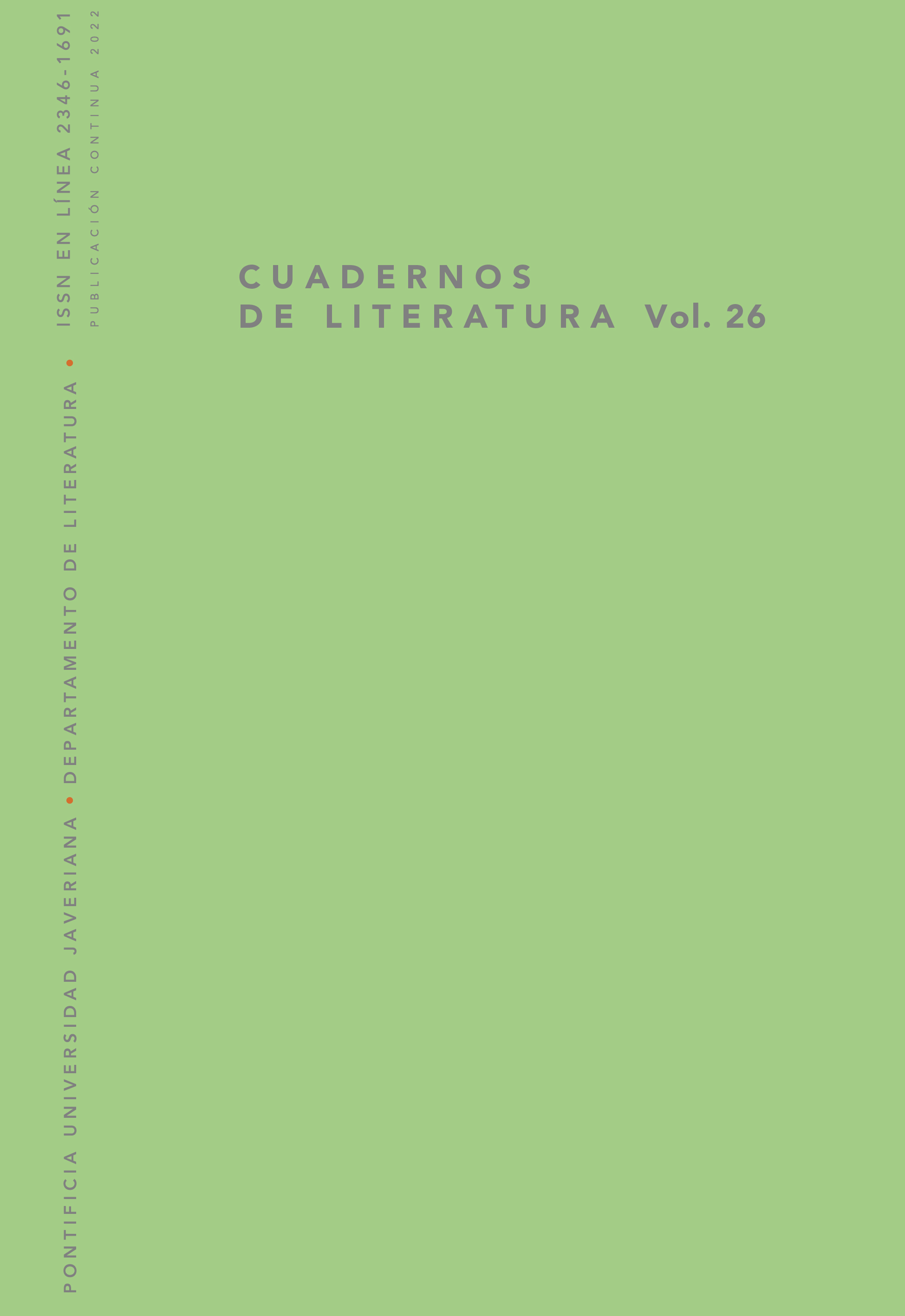Resumo
Que el arte contemporáneo internacional registra un archival turn es ya un acuerdo unánime entre los teóricos. Aunque no es la primera vez que el arte recurre a materiales de archivo, este impulso tiene –según Hal Foster– la característica distintiva de representar una búsqueda de los artistas por hacer físicamente presente en sus obras información histórica previamente inaccesible. En América Latina, donde las dictaduras atentaron contra la formación de archivos, el archival art es frecuentemente pensado en relación con la construcción de memoria cultural. Este artículo, sin embargo, propone pensar –a partir de la obra que la artista chilena Voluspa Jarpa (1971) elaboró con archivos desclasificados de la CIA– el interés de la exhibición artística de documentos históricos como síntoma de una búsqueda de verdad –de la verdad de los hechos y de un “acontecimiento de verdad” (Badiou)–, que antes se daba en otros ámbitos y que ahora parece darse en el arte. El artículo analiza los modos en que la exhibición museística de documentos de archivo modifica la relación con el espectador, para finalmente reflexionar sobre lo que eso significa respecto del lugar social del arte y del museo como lugares alternativos de búsqueda de verdad y justicia.
Agamben, Giorgio. “¿Qué es lo contemporáneo?”. Desnudez. Buenos Aires: Adriana Hidalgo Editora, 2011.
Arfuch, Leonor. “Arte, memoria y archivo”. Punto de vista XXIII.68 (2000), 34-37.
Badiou, Alain. El ser y el acontecimiento. Buenos Aires: Manantial, 2003.
Benjamin, Walter. “La obra de arte en la época de su reproductibilidad técnica”. En: Discursos Interrumpidos I. Madrid: Taurus, 1989. Bernini, Emilio. “Salir del cine. Devenir y mutaciones de las imágenes”. Kilómetro 111 14-15 (2018), 1-22. Blanco, Fernando. “The Body of Work in Jarpa: Hysteria’s Second Coming”. https://www.academia.edu/5458540/The_Body_of_Work_in_Jarpa_Hysterias_Second_Coming (9/2/18). Breakell, Sue. “Perspectives: Negotiating the Archive”. Tate Papers 9 (2008). http://arts.brighton.ac.uk/staff/sue-breakell/perspectives-negotiating-the-archives
Derrida, Jacques. Mal de archivo. Una impresión freudiana. Madrid: Editorial Trotta, 1997.
Derrida, Jacques. “Derecho de mirada”. En: Ecografías de la Televisión. Entrevistas filmadas. Buenos Aires: Eudeba, 1998, 45-56.
Didi-Huberman, Georges. El archivo arde. Traducción de Juan Antonio Ennis para uso de la Cátedra de Filología Hispánica de la Universidad Nacional de La Plata, Argentina, s.f. Enwezor, Okwui. “Archive Fever: Photography between History and the Monument”. En:Archive Fever: Uses of the Document in Contemporary Art. New York: International Center of Photography/Steidl, 2008. Foster, Hal. “Archives of Modern Art”. October 99 (2002), 81-95. https://doi.org/10.1162/016228702317274648
Foster, Hal. “An Archival Impulse”. October 110 (2004), 3-22. https://doi.org/10.1162/0162287042379847
Foucault, Michel. La verdad y las formas jurídicas. Buenos Aires: Gedisa, 1980.
Foucault, Michel. La Arqueología del saber. Buenos Aires: Siglo XXI editores, 2002.
García, Fernando. “Voluspa Jarpa: ‘Corrupción, mentiras y secretos son las consecuencias de las Guerra Fría’”. La Nación (Buenos Aires, 17 julio de 2016). En: https://www.lanacion.com.ar/1918810-voluspa-jarpa-corrupcion-mentiras-y-secretos-son-las-consecuencias-de-la-guerra Giunta, Andrea. “Archivos”. Objetos mutantes. Sobre arte contemporáneo. Santiago: Palinodia, 2010.
Giunta, Andrea. “Archivos. Políticas del conocimiento en el arte de América Latina”. Errata# 1 (2010), 20-37.
Giunta, Andrea. “El glamour de los archivos”. Simposio ¿Qué es el arte contemporáneo hoy? (6 y 7 de mayo de 2010), CaixaForum, Madrid.
Giunta, Andrea. “Politics of Representation. Art and Human Rights”. e-misferica 7 (2010), 1-17.
Giunta, Andrea. “The Archival Impulse: Accessing Documents in the Museum and the Politics of Knowledge”. Simposio Between Theory and Practice: Rethinking Latin American Art in the 21st Century (11-13 de marzo de 2011), Getty Center, Los Angeles, USA.
Graff Zivin, Erin. Inquisiciones figurativas. Conversión, tortura y verdad en el Atlántico Luso-Hispano. Adrogué: Ediciones La Cebra, 2017.
Groys, Boris. Volverse público. Las transformaciones del arte en el ágora contemporánea. Buenos Aires: Caja Negra editora, 2014. https://doi.org/10.12795/astragalo.2015.i20.15
Guasch, Anna María. Arte y Archivo, 1920-2010. Genealogías, tipologías y discontinuidades. Buenos Aires: Akal, 2011.
Huyssen, Andreas. “Escape from Amnesia: The Museum as Mass Medium”. En: Twilight Memories: Marking Time in a Culture of Amnesia. London: Routledge, 1995.
Jarpa, Voluspa. “Historia, archivo e imagen: sobre la necesidad de simbolizar la historia”. A Contracorriente. Una Revista de Historia Social y Literatura de América Latina/A Journal on Social History and Literature in Latin America 12.1 (2014), 14-29.
Jay, Martin. “Scopic Regimes of Modernity Revisited”. En: Essays from the Edge: Parerga and Paralipomena. University of Virginia Press, 2011, 51-63. https://doi.org/10.5040/9781474294140.ch-003 Mirzoeff, Nicholas. The Right to Look: A Counterhistory of Visuality. Durham: Duke University Press, 2011. Rancière, Jacques. El reparto de los sensible. Estética y política. Santiago: LOM, 2009.
Rancière, Jacques. El espectador emancipado. Buenos Aires: Manantial, 2010.
Rebentisch, Juliane. Estética de la instalación. Buenos Aires: Caja negra editora, 2018. Rojas, Sergio. “El arte como archivo del futuro”. El arte agotado. Magnitudes y representaciones de lo contemporáneo. Santiago: Sangría Editora, 2012. Rollin, Pierre-Oliver. “Visual Arts and Spectacle in the Age of Post-Fordism. The Return of Temples of Culture: from Museum to Mausoleum”. En: Lieven De Cauter, Ruben De Roo y Karel Vanhaesebrouck (eds.). Art and Activism in the Age of Globalization. Rotterdam: Nai
Publishers, 2011, 74-82. Soto, Hernán. Archivos secretos: documentos desclasificados de la CIA. Traducción y notas: Hernán Soto y Sergio Villegas. Fotocopias de documentos oficiales. United States. Central Intelligence Agency. Santiago: LOM Ediciones, 1999. Sturken, Marita “Reclaiming the Archive. Art, Technology, and Cultural Memory”. En: David Ross (ed.). Seeing Time. Selections from the Pamela and Richard Kramlich Collection of Media Art. San Francisco: San Francisco Museum of Modern Art, 1999, 31-49.
Tacetta, Natalia. “En nuestra pequeña región de por acá: de la desclasificación del documento al contraarchivo en la obra de Voluspa Jarpa”. MERIDIONAL Revista Chilena de Estudios Latinoamericanos 9 (2017), 235-260.
Walden, Jennifer. “Protesting the Archive: The Artist as Producer”. Aesthetics of Protests (2014). http://aestheticsofprotest.org/protesting-the-archive-the-artist-as-producer/
Žižek, Slavoj. “Gestos vacíos y performativos: Lacan contra el complot de la CIA”. En: Cómo leer a Lacan. Buenos Aires: Paidós, 2008

Este trabalho está licenciado sob uma licença Creative Commons Attribution 4.0 International License.


